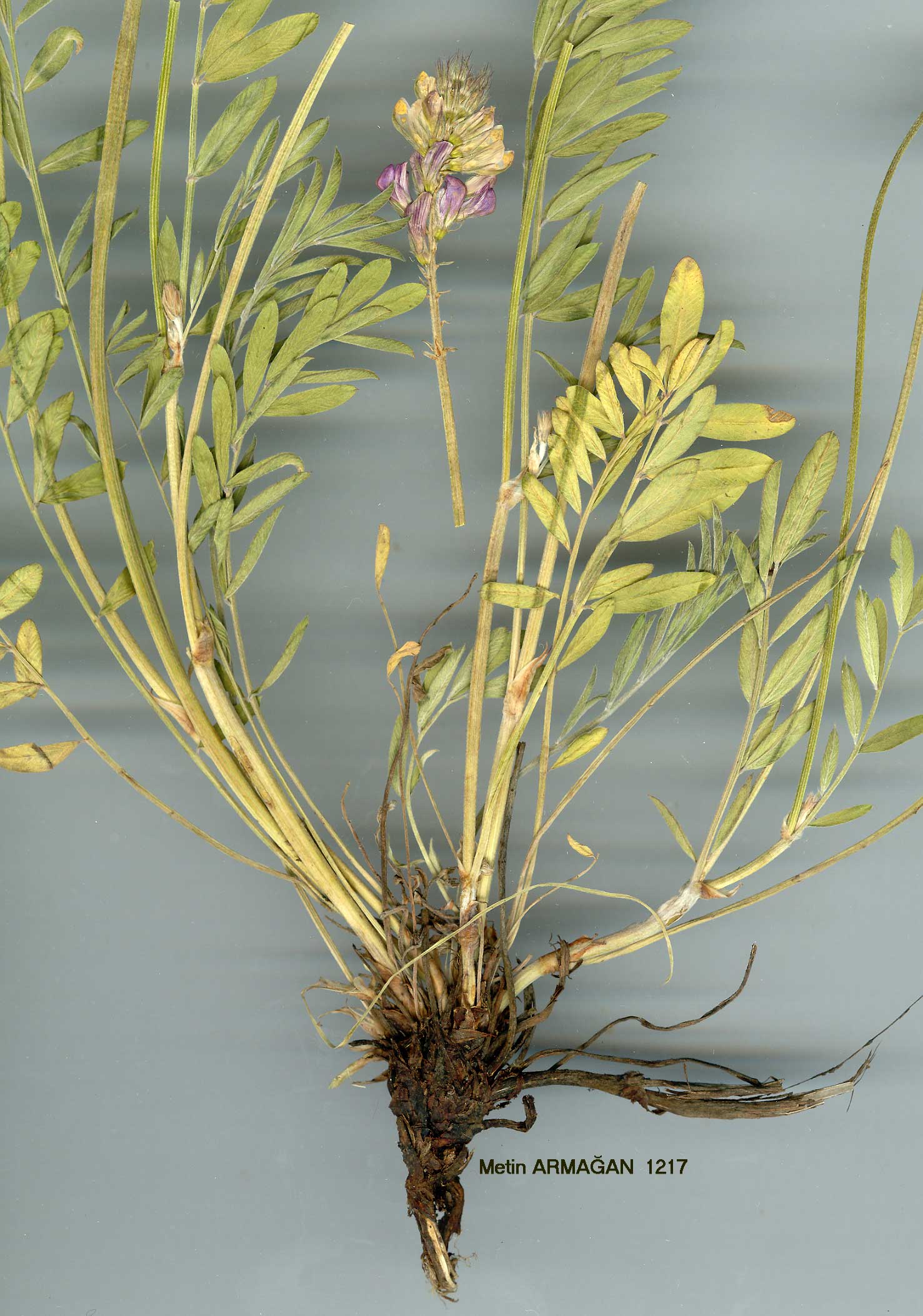| Fabaceae |
|---|

Onobrychis fallax FREYN ET SINT. |
 Onobrychis fallax FREYN ET SINT. |
Onobrychis ADANS. |
| O. fallax Freyn & Sint. in Öst. Bot. Zeitschr. 42:81 (1892). Figure 15, p. 585. Syn: O. leucantha Schischk. in Ber. Tomsker Staats.-Univ. 81:485 (1928)! Perennial with a woody base and erect stems, 25-50 cm high. Leaves with 4-6 pairs of leaflets; lower leaves with ovate or ovate-elliptic leaflets and a dense adpressed silvery indumentum on lower surface, pilose above and ± green; upper leaves with oblong-elliptic or linear-oblong leaflets, pilose above and be-low; stipules white, scarious. Peduncles clearly longer than leaves. Inflorescence many-flowered, ovate-oblong, elongating in fruit. Calyx (4-)5-8 mm with teeth 2-3 x length of tube, ± densely covered with short spreading villous hairs. Corolla rose with darker striations; standard (7-)8-10 mm; wings 2-3 mm; keel (6-)7-9 mm. Fruit 6-7(-9) mm long, adpressed pilose with hard triangular teeth on crest and shorter teeth on disc. Fl. 6. Limestone slopes, steppe, 1150-1500 m. Type: [Turkey B7 Elazığ] Kharput (Harput) prope Buslutasch, 5 vi l889, Sintenis 561 (K!). Scattered in C. & E. Anatolia. B7 Erzincan: Egin, Sint. 1890:2339; Elaziğ: Harput, 1380 m, Hub.-Mor. 9058! Tunceli: above Pertek, 1500 m, D. 31526! B9 Muş: Melazgerd, 1500 m, ann. 1916, Saposhnikov & Schischkin (type of O. leııcantha)! C4 Konya: d. Ermenek, Ermenek to Mut, 1170 m, Hub.-Mor. 17496! Endemic; Ir-Tur. region. Related to O. podperae irj, but with larger corollas and broader leaflets. The specimen cited from Konya {Hub.-Mor. 17496) is geographically distant from all the other gatherings seen. It also differs in the . much thinner calyx indumentum. Although it may merit taxonomic recognition, more material from the Konya region is needed. |